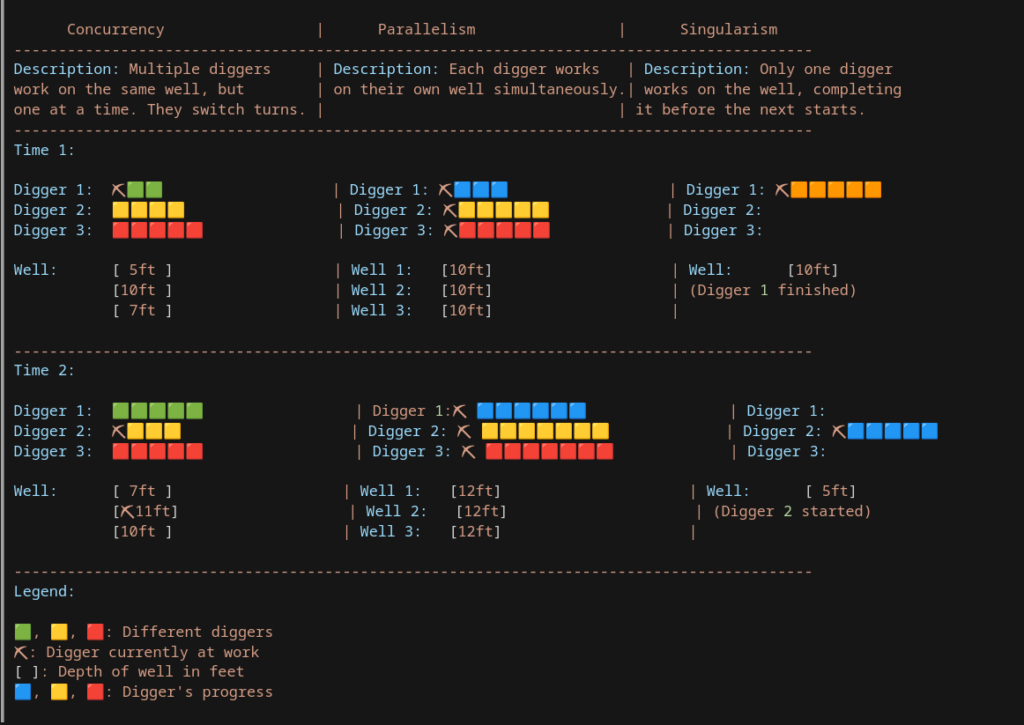
Multi-threading Unearthed: Digging into Concurrency, Parallelism, and Singularism with Well-Diggers! 🎉
Introduction: Unearth the Treasure of Knowledge! 🤩
Hey tech enthusiasts! Ever felt like you’re sinking into a well of jargon when you hear terms like “concurrency,” “parallelism,” and “singularism?” Well, it’s time to dig yourself out! Imagine understanding these complex concepts through something as straightforward as well-digging. Ready for the adventure? Let’s dive in! 🚀
Meet the Diggers: Heroes of Our Analogy 🌞🕳️
Picture three enthusiastic well-diggers armed with their trusty digging tools. They’re faced with the monumental task of digging a 100-foot well. Like a developer choosing a multi-threading approach, they’ve got options: concurrency, parallelism, or singularism.
Concurrency: The Art of Tool-Sharing 🔄
In a small village with just one digging tool, our well-diggers take turns. Digger 1 starts, digs a few feet, then passes the tool to Digger 2, and so on. This cycle repeats until the well reaches 100 feet. While it might seem like they’re all digging at once, they’re actually sharing a single resource—the digging tool.
🔍 Tech Analogy: This is like having multiple threads that share a single CPU. Threads get a slice of CPU time, then make way for the next, resembling our well-diggers passing along the single digging tool.
Parallelism: Dig, Baby, Dig! 🎉
In a resource-rich setting, each digger has their own digging tool. All three can dig simultaneously, making quick work of that 100-foot target. No waiting, no passing tools—just non-stop digging.
🔍 Tech Analogy: This resembles having multiple threads with dedicated CPUs. Each thread has all the resources it needs and runs independently, just like our well-diggers with their own tools.
Singularism: One Digger to Rule Them All 🚶
In this scenario, only one digger takes the stage. Armed with the digging tool, they dig the entire 100-foot well from start to finish without interruption. No sharing, just one monumental task completed in one go.
🔍 Tech Analogy: This is like having a single thread execute a task from start to finish on a CPU, without any context switching.
Time and Resource Trade-offs ⏲️
Here’s the drill (pun intended!):
- Time in Parallelism < Time in Concurrency < Time in Singularism
If parallelism is so quick, why consider concurrency? Simple—sometimes resources (like digging tools or CPUs) are limited. Concurrency is your next best bet when you can’t go full-on parallel.
Wrap-Up: Striking Gold! 🏆
Understanding concurrency, parallelism, and singularism can seem like a Herculean task, but we’ve just made it as easy as digging a well! The treasure trove of knowledge is now yours for the taking. Feel like you’ve struck gold? Let’s keep digging into the fascinating realm of multi-threading! 🌟
